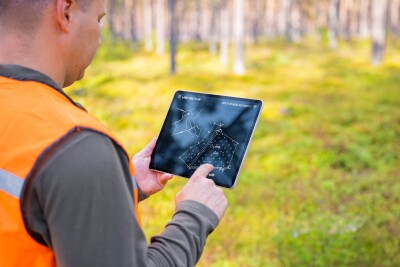A conversation with co-founder Max Lobovsky
CAMBRIDGE, Mass. – When a company sets out to raise $100,000 and winds up with just shy of $3 million, that company has unquestionably done something very right. Such is the case with Formlabs and its Kickstarter campaign, which wrapped up Oct. 26 a tidy 2,800 percent over goal. In the end, the company pre-sold 1,028 3D printers and now must use that money it raised to fulfill all of its promises, producing those printers and delivering them in a timely fashion as promised in the Kickstarter campaign.
That’s the task Formlabs co-founder Max Lobovsky is focused on in the short term, he admits on a call from his company’s offices here in Cambridge, but he hasn’t taken his eye off the big picture as he answers questions about how he sees 3D data capture and 3D printing growing together.
“Our vision is to get more 3D printers into more hands than has ever happened before,” he said, “and part of that is reducing the cost and increasing the ease of use. Once you start making a personal desktop item, you can’t be thinking about requiring training and that also trickles down to the question of how people get models into the system.”
Enter 3D data capture. Lobovsky noted 3D Systems’ purchase of Hyper3D (who have an office here in Cambridge as well) as evidence that it’s no secret that the 3D printing market will be propelled by growing the number of people who can quickly and easily create a digital model that can actually be printed.
However, he emphasized that Formlabs is not in the consumer business. “We’re looking at people who are already involved with 3D content creation,” he said, “and scanning is another source of content, and we’re closely following the photogrammetry developments, and that’s part of what makes what we’re doing possible.”
Even within the professional marketplace, the creation of 3D-printable models hasn’t always been accessible to everyone with a computer. Specialized and relatively expensive software has been needed up until just the past few years for CAD modeling. And 3D data capture? That was exceedingly expensive until recent photogrammetry software advances.
Now, “more and more people have access to CAD software than ever before,” Lobovsky said, “and that’s happening with scanning, too, and that’s all good for us.”
This should drive, he theorized, 3D printing into markets beyond where its use has obvious and immediate ROI, like the manufacturing industry.
“What we expect to see as we make this product more accessible than it’s ever been,” he said, “is that we’ll see more and more uses of 3D printing where it wasn’t necessary or critical. If you’re designing an injection-molding case, then absolutely you’re going to use 3D printing. But I think we’ll start to see it in places like construction and architecture more and more, where there’s actually some penetration with 3D printing already.”
In general, Formlabs believes, the barriers to the growth of 3D printing are as much workflow-related as they are cost-related. Yes, Formlabs is making a relatively inexpensive stereolithography-based 3D printer (starting around $2,500), but it has also created a workflow where there’s no need to adjust printer settings or do anything other than hook up a laptop to the printer via USB and hit print on an .STL file.
That’s why Formlabs, said Lobovsky, is equally interested in photogrammetry software that creates models rapidly from photographs. The process of laserscan-to-model is still expensive and probably too high-end to be a great fit with what Formlabs is trying to do, he said.
“Big picture, we like making tools that get out of people’s way,” he said, “and there are a lot of areas that you can go from the product we started with where we can try to apply the same formula. We’re going to look at areas where some of the technology is there, and the basic use case is proven, but it’s just a lot more difficult than it needs to be, and we’ll try to make it easier.”
“It’s kind of a strange market we’re playing in,” he allowed. If you look at how a company like 3D Systems is talked about in the financial press, he said, you’ll see they’re described as playing in the industrial space. “That’s traditionally been what the business has been like,” Lobovsky said. “We’re trying to look very different, but it’s still not clear that it even makes sense.”





